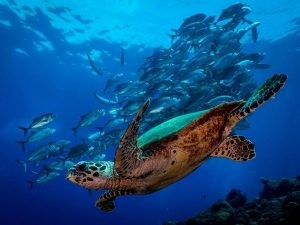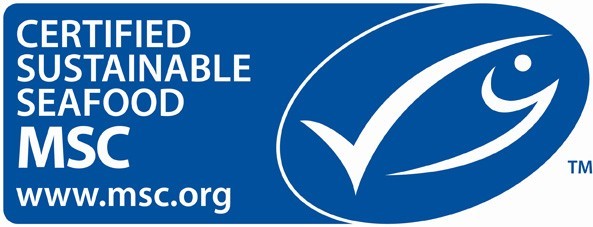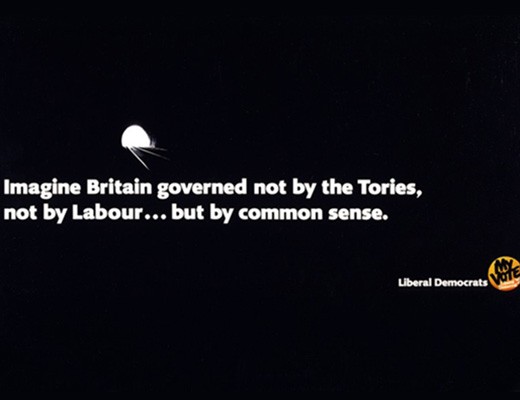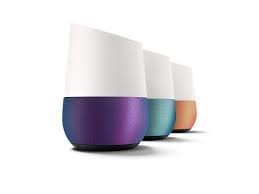Sainsbury’s – king of sustainable seafood

Article courtesy of Eleanor Devenish, our Conservation Intern and distance learning student
Which fish is sustainable?’ is a question that many environmentally conscience consumers are asking today. With the world’s overfishing crisis and fish stock depletion, there’s been no shortage of pressure on retailers to sell responsibly caught or farmed seafood. A whole host of campaigns, from the Greenpeace Tuna League Table to the Marine Conservation Society‘s Good Fish Guide, has led to consumers being more aware than ever before of the impacts of unsustainable fishing practices. Moreover, they’re able to use these guides to understand which supermarkets are taking this seriously and which products can be bought with a clear conscience. This provides a very real motivation for supermarkets and brands to up their game to avoid the risk of reputational damage from being associated with irresponsible sourcing. Companies with a long term way of thinking will also realise that sourcing sustainably is the best way to ensure security of supply. But it’s not just about managing risk. There are immense opportunities for innovating and offering new products and services that are ethical. Seizing these opportunities helps companies differentiate themselves in the market place, doing things differently to set their brand apart and increasing their market share.
This is what Sainsbury’s has done by selling sustainable seafood which has been certified by the Marine Stewardship Council (MSC). According to the MSC’s annual supermarket league table, this grocer has the most sustainable products of any supermarket – worldwide. How does it work? The MSC sets credible standards for sustainable fishing and supply chain traceability and if it deems a product to be sufficiently sustainable, the blue MSC “ecolabel” is printed on its packaging. This label has been awarded to over 300 fisheries in 30 countries, with Sainsbury’s stocking 225 ecolabel items, whilst Big 4 rivals Asda and Morrisons just stocking a handful.

The role of sustainable marketing
This is a fine example of sustainable marketing – meeting the needs of today’s and future customers whilst benefiting the planet and society. The MSC innovated a new service by spotting the need to drive global seafood markets to become more sustainable. The fisheries strived to operate more responsibly so as to provide for today’s customers without sacrificing future generations. The pressure groups and conservation charities motivated retailers to do business differently, often through educating their customers. Finally, Sainsbury’s and other supermarkets are achieving success by constantly monitoring the environment and other external factors that influence the market, not least by watching you. Your behaviour, your attitudes, your trends. What do customers want today? how will people associated with our brand be perceived by others? and are our competitors fulfilling customer needs to a great or lesser extent? Understanding this shows companies where their opportunities and threats lie. Once they know this, they can set better informed objectives. To find out more about the process companies take to assess market trends and provide sustainable solutions, have a listen to the Cambridge Marketing College radio show featuring corporate social responsibility.
Sustainable marketing isn’t just about researching the market and championing sustainability. Once more sustainable products are on the shelves (or services are made available, for instance sustainable voluntourism opportunities), customers need to know about them – again, through marketing.
What makes sustainable marketing effective?
Ecolabels, such as the MSC logo are commonly used to inform consumers that a product is sustainable or ethical in some way. It’s estimated that consumers are faced with at least 455 of them, across 25 industry categories, from food and household cleaners to clothing and energy. But this may not always be as helpful as it sounds, with studies showing that this level of information can cause confusion, a feeling of being overwhelmed and even mistrust about the legitimacy of labels. You can understand why, when labelling such as ‘responsibly sourced’ or ‘dolphin friendly’ has been shown to be misleading in the past. A 2011 report by Client Earth, for example, found that out of 100 products with such claims, 32 came from retailers that failed to provide sourcing information to back this up. Sadly, this can cause consumers to undermine all claims and ecolabels – genuine or not. This means that marketers have a responsibility to provide accurate and trustworthy information in a concrete way, rather than using vague buzz words such as ‘good for the planet’ and ‘eco-friendly’. Ensuring that products are certified by a credible body is a great way to achieve this and show consumers that the production process involved is being monitored and managed rigorously.
Studies have also shown that consumers consider the quality of information contained in labels, with detailed labels carrying information about the eco-claims being favoured over basic graphics or icons that merely suggest eco-friendly attributes. In a report by customer watchdog Which?, consumers were shown seven sustainable fish labels. 40% of people surveyed thought that the labels lacked sufficient information to buy sustainably, whilst a third didn’t recognise any of the labels. This presents a further challenge for marketers – motivating consumers to look for these labels and making them stand out.
Why is sustainable marketing important?
Winning over customers with vague or misleading eco-claims whilst not acting sustainably does not make for a successful long term business case, with the collapse of fish stocks having the potential to disrupt the food supply for millions. There’s also the need to do business in a way that’s socially just. As well as causing severe habitat destruction, disputes in the South China Sea and overfishing are putting the livelihoods of local communities at risk, with the depletion of coastal waters forcing many fishermen to venture beyond national limits and into disputed areas to make a living. On the other hand, seafood certification bodies can ensure that rural livelihoods are properly supported – one example being the Aquaculture Stewardship Council (ASC), whose aim is to ensure that socially responsible fish farming practices are at the centre of the fish farms that they certify. One farm certified by ASC is Trapia Malaysia, producing tilapia. Each tilapia fingerling is verifiable and traceable throughout the value chain. This is very much needed in Malaysia, where most fish stocks have been overexploited. Destructive and harmful gear is used to catch fish at the expense of biodiversity, causing accidental bycatch of threatened species and juvenile fish. According to a 2015 study from WWF, total catch from trawl net fishing contains 70% to 80% trash fish. WWF also found that limited stock resulted in coastal fisherman losing over half of their fish catch and when they conducted a 2009 awareness study, it was found that just 27% of Malaysian consumers were aware of the alarming fish supply decline.

What is ‘Shared Value’?
To tackle this problem, WWF launched a Save Our Seafood (S.O.S) Campaign to raise awareness amongst consumers about the status of our fisheries and promote sustainable seafood choices, including MSC and ASC certified fish, through a seafood guide. Awareness campaigns like this one, along with sustainable fish farms like Trapia Malaysia and environmentally conscious retailers like Sainsbury’s are all examples of creating shared value, where the aim is to “reinvent capitalism and unleash a wave of innovation and growth” (Porter and Kramer, 2011). Their theory suggests that creating shareholder value can now also work for the social good – thus transforming capitalism. This is done through innovating the supply chain to become more sustainable, benefiting the community and acting in a socially and environmentally responsible way.
This isn’t only relevant for the fishing industry but all industries, including tourism for example. As one of the 12 mega-biodiversity countries worldwide, Malaysia is a tourist hot spot. However, this often has negative impacts on the environment when not done sustainably, for example through coral reef destruction. Another example of creating shared value is Fuze Ecoteer, an organisation focused on conserving wildlife, protecting the environment and benefiting the local community through voluntourism. It does this by teaching tourists responsible snorkelling, carrying out beach cleans, protecting sea turtles and employing locals to share their expertise, to name a few.
I’m looking forward to my time with Fuze Ecoteer, where I’ll get to experience this shared value first hand as a Conservation Marketing Intern. I’ll be sharing my experiences on this blog, so keep a look out!



